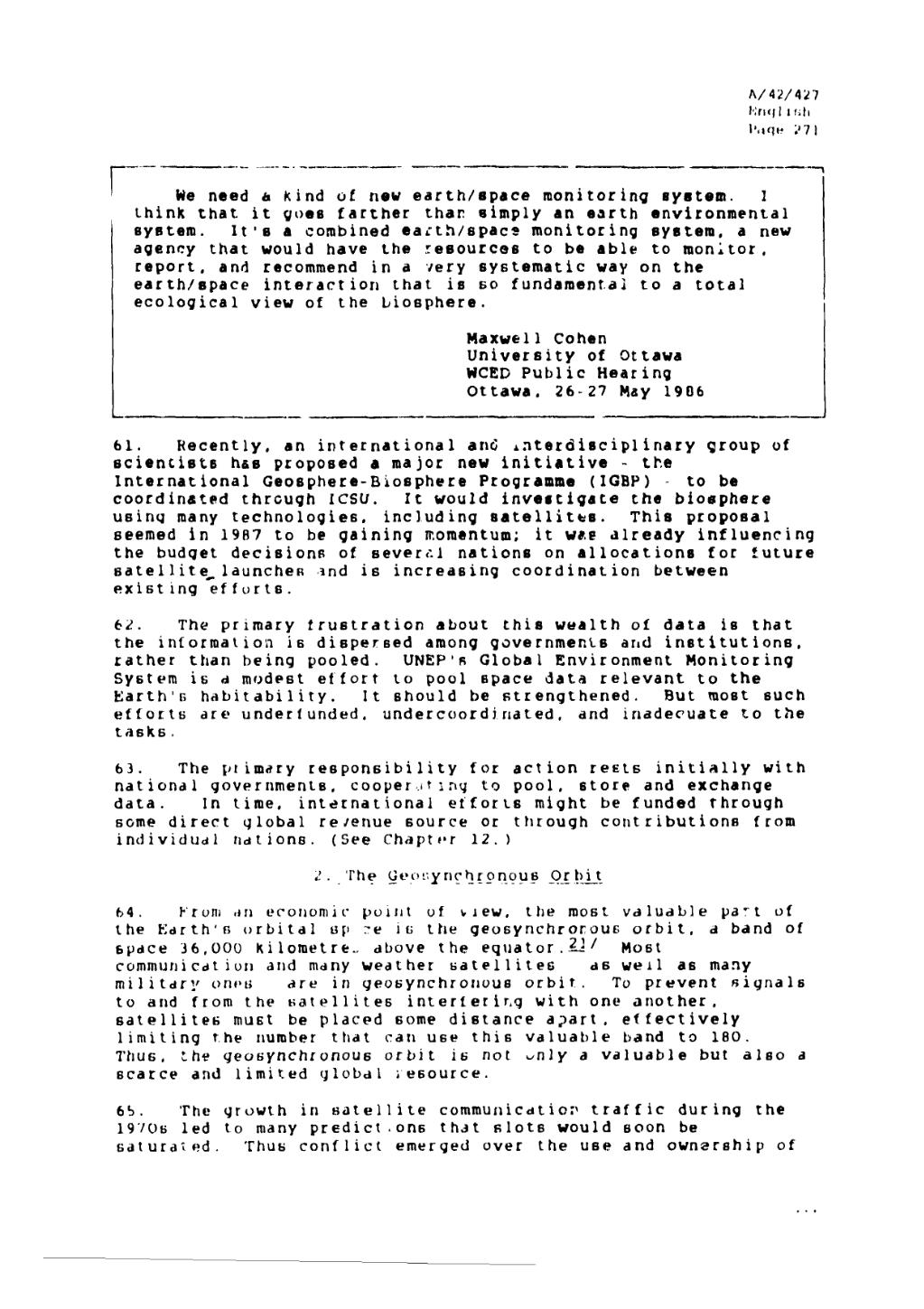A/42/427
English
Page 271
We need a Kind of new earth/space monitoring system. I think that it goes farther than simply an earth environmental system. It's a combined earth/space monitoring system, a new agency that would have the resources to be able to monitor. report, and recommend in a very systematic way on the earth/space interaction that is so fundamental to a total ecoloqical view of the biosphere.
Maxwell Cohen
University of Ottawa
WCED Public Hearing
Ottawa. 26-27 May 1986
61. Recently, an international and interdisciplinary group of scientists has proposed a major new initiative – the International Geosphere-Biosphere Programme (IGBP) to be coordinated through ICSU. It would investigate the biosphere using many technologies, including satellites. This proposal seemed in to be gaining momentum; it was already influencing the budget decisions of several nations on allocations future satellite launches and is increasing coordination between existing efforts.
62. The primary frustration about this wealth of data is that the information is dispersed among governments and institutions, rather than being pooled. UNEP's Global Environment Monitoring System is a modest effort to pool space data relevant to the Earth's habitability. It should be strengthened. But most such efforts are underfunded.,undercoordinated, and ineducuate to the tasks.
63. The primary responsibility for action rests initially with national governments, cooperating to pool, store and exchange data. In time, international efforts might be funded through some direct global revenue source or through contributions fro individual nations. (See Chapter 12. )
2. The Geosynchronous Orbit
64. From an economic point of view, the most valuable part the Earth's orbital space is the geosynchronous orbit, a band of space 36,000 Kilometres, above the equator.[1] Most communication and many weather satellites as well as many military ones, are in geosynchronous orbit. To prevent signals to and from the satellites interfering with one another, satellite must be placed some distance apart, effectively limiting the number that can use this valuable band to 180. Thus, the geosynchronous orbit is nor only a valuable but also a scarce and limited global resource.
65. The growth in satellite communications traffic during the 1970s led to many predictions that slots would soon be saturated. Thus conflict emerged over the use and ownership of
/…
- ↑ When the speed of a satellite matches the speed of the planer's rotation, the satellite is stationary relative to particular places on the Earth. There is only one band or directly above the equator, where it is possible to achieve geosynchronous orbit.
